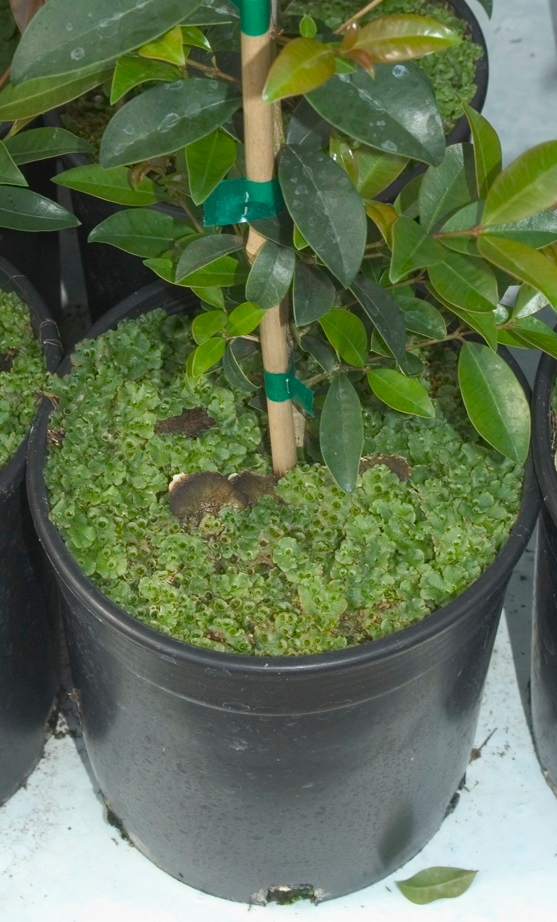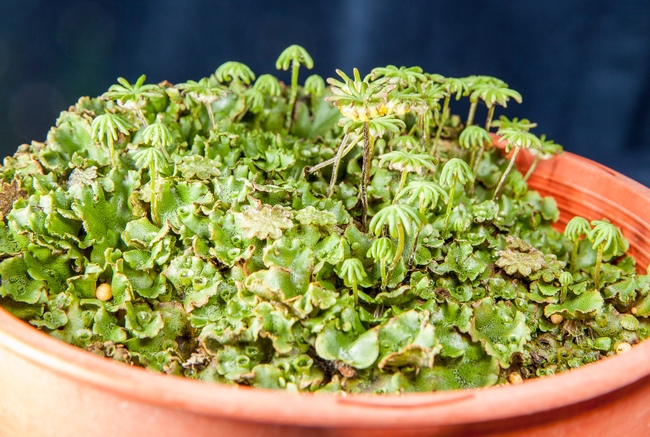
Unlike most weeds that growers deal with, liverworts are very primitive plants. Land plants arose from freshwater green algae around 500 million years ago. Bryophytes, consisting of liverworts, mosses, and hornworts, were some of the earliest groups of land plants. They have features distinct from those of other land plants: they lack a vascular system and lignified (hardened) cell walls, they have motile sperm that can swim in water, and their life cycle is dominated by a haploid stage. Liverworts are mostly composed of cells with nuclei that only contain one set of chromosomes (haploid). More evolved plants, the crops and weeds on land that we are familiar with, are primarily composed of cells that have two sets of chromosomes (diploid). Only their eggs and sperms are haploid.
It turns out that liverworts with their haploid nature, production of spores, ease of culture, and quick regeneration time-- the same characteristics that make them weeds-- are the same characteristics that help scientists study the most advanced forms of experimental molecular plant biology. Here is where liverworts shine. In 2015, Japanese molecular plant biologists created liverwort mutants by bombarding them with radiation. These mutants were studied with genetic markers to elucidate how land plants might use their phytochrome system and different wavelengths of light to regulate plant development. In addition, the liverwort's chromosomes have been analyzed. This has revealed that most of the genes that regulate growth and development in higher land plants are also found in liverworts. It has been suggested recently that many of the fundamental features of land plants appeared in bryophytes first and were then co-opted in vascular plants. So in a distant way, the crop plants you grow today have a little bit of liverwort genetic material in them. The next time you cuss out those tenacious liverworts growing in your nursery crops, think about how intrinsically important they are to the crops you grow!
For the next several Wednesday blogs, I will discuss liverwort biology and management. Don't forget to subscribe to receive these posts in a timely manner.
